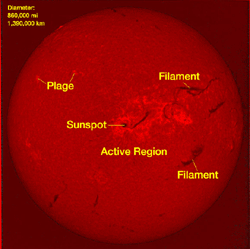This image shows an active region of the Sun. The National Solar Observatory, Sacramento Park, CA, made it using one of several types of telescopes. Information about the Sun’s activity is used to support of space weather forecasts. NSO has equipment that acquires solar images in the hydrogen-alpha line (once per minute), in continuum (once every ten minutes), and in line-of-sight magnetic fields. Images are passed through an automatic image-processing pipeline and are subsequently analyzed and displayed using various software tools. The areas marked, "plage" represent an area of brightnes. Filiments are gas clouds above the Sun's surface.
Click on image for full size
Image courtesy of the National Solar Observatory at Sacramento Peak
The Chromosphere
Above the photosphere is the chromosphere,
a region about 2500 kilometers thick. Just prior to and just after
the peak of a total solar eclipse ,
the chromosphere appears as a thin reddish ring. The conspicuous
color of the chromosphere (compared to the mostly white corona) led to its
name (meaning ``color sphere.'')
The chromosphere is most easily viewed in emission
lines such as Hydrogen alpha, where bright regions known
as plages, and dark features called filaments are visible. Filaments
are the name given to prominences
when they are seen on the solar disk.
Spicules are visible in the chromosphere on the limb (the edges) of the
sun. They are jets of plasma shooting up from supergranule
boundaries. While small compared to the sun, these plasma jets are
actually the size of earth!
You might also be interested in:
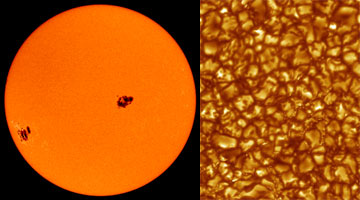
Most of the energy we receive from the Sun is the visible (white) light emitted from the photosphere. The photosphere is one of the coolest regions of the Sun (6000 K), so only a small fraction (0.1%)
...more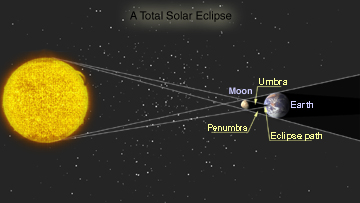
An eclipse of the Sun occurs when the Earth passes through the Moon's shadow. A total eclipse of the Sun takes place only during a new moon, when the Moon is directly between the Sun and the Earth and
...more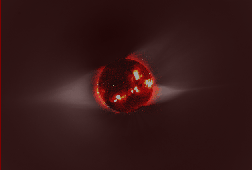
Rising above the Sun's chromosphere , the temperature jumps sharply from a few tens of thousands of kelvins to as much as a few million kelvins in the Sun's outer atmosphere, the solar corona. Understanding
...more
Eclipses have been monitored for centuries, but it was only recently that we understood what really occurs. Eclipses have always been fascinating to watch, but they weren't always welcome. For many years,
...more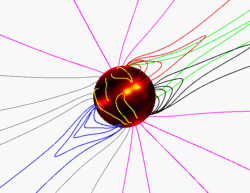
The gas in the solar corona is at very high temperatures (typically 1-2 million kelvins in most regions) so it is almost completely in a plasma state (made up of charged particles, mostly protons and electrons).
...more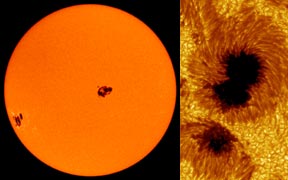
Sunspots are dark, planet-sized regions that appear on the "surface" of the Sun. Sunspots are "dark" because they are cooler than their surroundings. A large sunspot might have a central temperature of
...more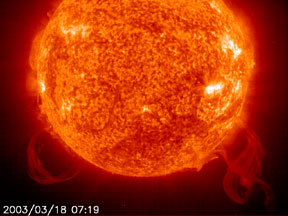
Large impressive loop-like structures on the edge of the solar disk sometimes stand out brightly against the dark background of space. Though these structures, called "prominences", appear to be very bright
...more


